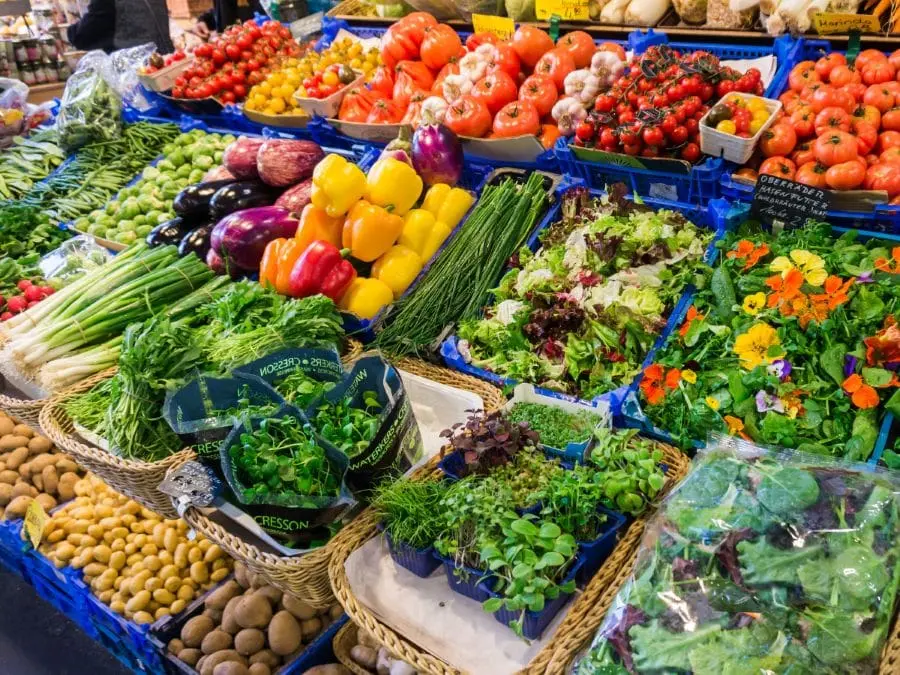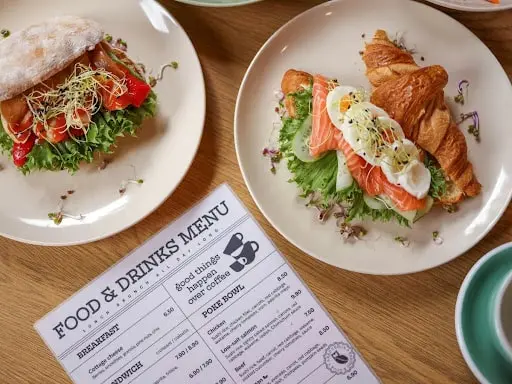How Restaurants Are Fighting Back Against Inflation in 2025
Table of Contents
- Inflation: The Constant Challenge Facing Restaurants
- Profits Before Growth: The New Inflation Strategy
- Smarter Menus: Flexibility Beats Fancy
- Value Menus and Smart Pricing: Protecting Demand
- People First: Managing Labor in an Inflationary Market
- Technology: Restaurants’ Inflation Shield
- Energy, Efficiency, and the Inflation Ripple Effect
- Inflation Sparks Innovation
- Take Control of Inflation Today
Inflation: The Constant Challenge Facing Restaurants
Every restaurant in 2025 is feeling the effects of Inflation. The economic squeeze has become a daily reality, whether it’s rising production costs, expensive deliveries, or staff wage pressure.
According to the Bureau of Labor Statistics (BLS), the consumer price index (CPI) for food away from home rose faster than the general inflation rate this year, largely due to fuel inflation, supply shocks, and increased labor costs. Core inflation, which excludes food and energy, remains stubbornly high, driving uncertainty across the hospitality sector.
A recent Toast survey of 700+ restaurant leaders found that Inflation is their top challenge, followed by staff turnover and marketing costs. Forty percent said boosting profitability was their main goal for 2025, while 29% focused on traffic growth despite price increases.
Restaurants can’t control inflation, but they can control how they respond to it, and the most successful ones are using smarter data, stronger partnerships, and local strategies to stay profitable.
Profits Before Growth: The New Inflation Strategy
For years, expansion was the restaurant industry’s primary sign of success. Now, in an era of high inflation, survival depends on stability. With consumer prices up and purchasing power down, operators are prioritizing margin protection over footprint growth.
According to labor statistics, average wages in the food sector have risen over 5%, outpacing revenue growth for many small and mid-size operators. Combined with fluctuating production costs and unstable price indexes, that’s forcing a fundamental reset.
Instead of chasing scale, restaurants are trimming inefficiencies, renegotiating vendor contracts, and relying on seasonally adjusted cost data to anticipate expenses. By tracking the current CPI and monthly inflation rates, managers are making decisions based on data, not panic.
Smarter Menus: Flexibility Beats Fancy

When inflation drives up the cost of key ingredients, flexibility becomes your most valuable skill. Menu engineering the art of adjusting offerings based on cost and demand, has become essential.
Many NYC chefs now design menus around seasonal produce and local supply chains to avoid volatile imports and long-distance shipping. By sourcing through food distributors in Long Island or restaurant supply companies in Brooklyn, they reduce exposure to fuel inflation and achieve price stability throughout the year.
This isn’t about cutting corners, it’s about cutting waste. Using farm fresh produce or local produce not only stabilizes costs but strengthens brand appeal among customers who value sustainability.
Restaurants that use data from the consumer price index and price index for goods and services to make menu adjustments see more consistent profit margins. Pairing that with a strong seasonal narrative, like featuring fresh produce in promotions, turns financial necessity into marketing opportunity.
Value Menus and Smart Pricing: Protecting Demand
Inflation has reshaped diner behavior. With prices rising and real wages stagnating, customers are making more careful choices. That’s why Inflation measures like the CPI for urban consumers directly impact restaurant traffic, and why value-driven pricing now matters more than ever.
According to Toast, 47% of operators plan to increase marketing, 46% to introduce limited-time value deals, and 45% to offer timed discounts. Chains like McDonald’s, Taco Bell, and Applebee’s have used value menus to protect volume without sacrificing margins, while independents are using creative fixed-price menus to maintain aggregate demand.
The secret is balance: Protect margins while preserving the guest experience. Use seasonally adjusted ingredient data to find dishes with stable price indexes. Use storytelling to explain why prices are changing, and communicate how your commitment to local farmers and fresh produce adds real value.
👉 Partner with Riviera Produce to secure stable prices and strengthen your local sourcing strategy.
People First: Managing Labor in an Inflationary Market
Inflation affects more than ingredients, it affects people. Rising consumer prices and rent hikes are pushing restaurant workers to demand higher wages, while operators struggle to maintain margins.
According to the Bureau of Labor Statistics, the percentage of restaurants facing moderate or severe labor challenges rose from 35% in 2024 to 41% in 2025. Meanwhile, inflation expectations have outpaced real interest rate growth, reducing employees’ purchasing power.
That’s why retention, not recruitment, is becoming the inflation-proof labor strategy. The Toast survey found that 42% of restaurants plan to implement retention programs, while 47% aim to improve labor efficiency through technology.
Flexible scheduling, upskilling programs, and shared incentives are keeping staff motivated without excessive wage inflation. The result? Lower turnover, better morale, and consistent service, all crucial to surviving long periods of price volatility.
Technology: Restaurants’ Inflation Shield
The Federal Reserve may be adjusting nominal interest rates to slow the Inflation rate, but restaurant operators aren’t waiting for macroeconomic relief. They’re turning to technology to fight back.
Smart POS systems and AI-driven analytics can now predict price changes, track monthly inflation rates, and alert operators to seasonally adjusted cost spikes. These platforms also integrate supplier data and menu performance, helping managers make decisions in real time.
Toast found that 81% of restaurant leaders plan to use AI tools more frequently in 2025, not to replace humans, but to optimize them. From automating prep forecasts to analyzing economic activity by daypart, AI helps offset production costs and prevent waste.
By comparing the nominal rate minus real interest rate, restaurant leaders can see how inflation measures directly affect cash flow and future pricing. In short, data has become the new ingredient for profitability.
Energy, Efficiency, and the Inflation Ripple Effect
Fuel inflation and energy costs are invisible profit drains. Every delivery, freezer cycle, or fryer hour now costs more due to supply shocks and increased demand for energy.
Many restaurants are upgrading to energy-efficient appliances, implementing off-peak prep times, and optimizing delivery routes. Some are even investing in renewable energy systems to reduce dependence on volatile energy markets.
Operational sustainability also strengthens marketing. Guests increasingly prefer restaurants that prioritize efficiency and responsibility, especially in NYC, where economic activity and environmental awareness go hand-in-hand.
Small changes, like installing smart thermostats or switching to LED kitchen lighting, may seem minor, but over long periods, they counteract price increases that stem from fuel inflation.
Inflation Sparks Innovation
Despite its challenges, Inflation has become a catalyst for innovation in the food industry. It’s pushing restaurants to adopt smarter systems, localize supply chains, and think creatively about sustainability and community.
Chefs are using cost-effective ingredients like legumes and grains, blending them with premium elements to maintain appeal while balancing price stability. Others are partnering with local farmers markets and distributors to create fixed-cost supply agreements that shield them from volatile prices and demand shocks.
Marketing is also evolving. Instead of apologizing for price increases, restaurants are using transparency as a trust-building tool. When guests understand that Inflation affects ingredients, delivery, and wages, they’re more likely to stay loyal, especially if they see your brand investing in local jobs and fair partnerships.
Inflation isn’t just raising costs; it’s raising the standard of operations. It’s motivating restaurants to build leaner, smarter, and more resilient business models.
Take Control of Inflation Today
Inflation may be global, but your solutions are local. Whether you’re a chef, restaurant owner, or food distributor, the key is to manage what you can control: sourcing, efficiency, and communication.
💡 Partner with us to lock in competitive pricing on local ingredients, minimize supply risk, and maintain profitability in a shifting economy.
👉 Visit our Food Distributor website today! to build your inflation-resistant strategy.
